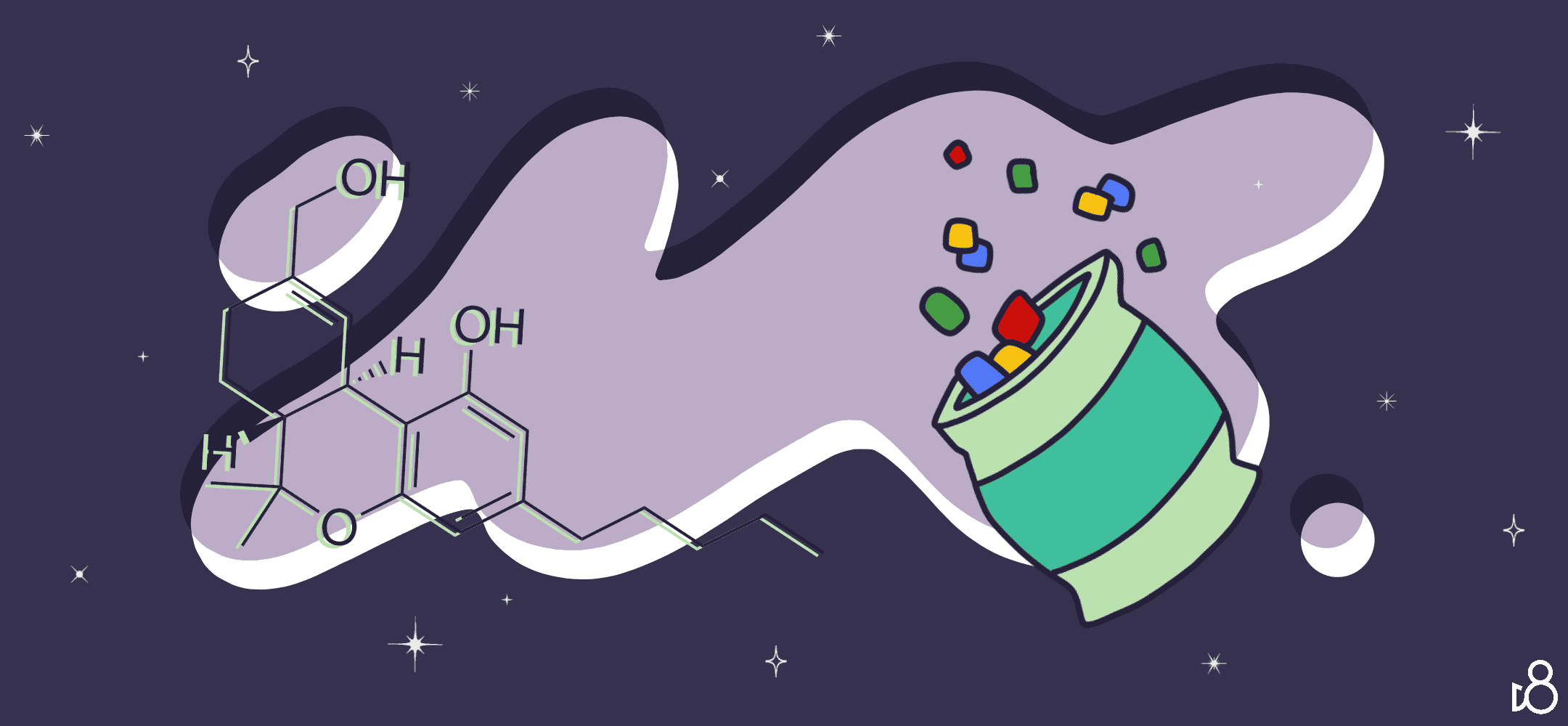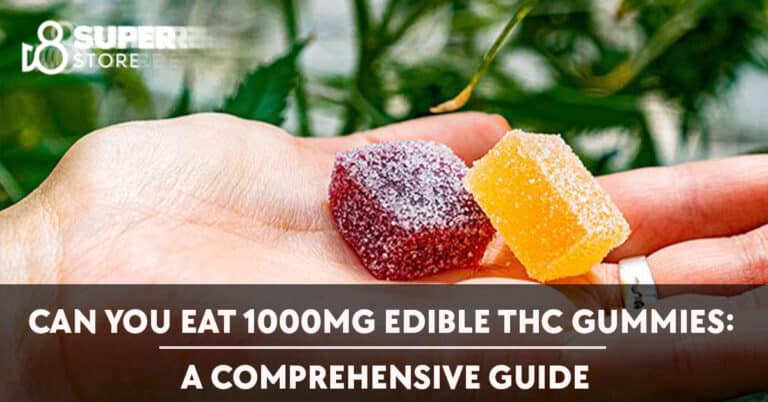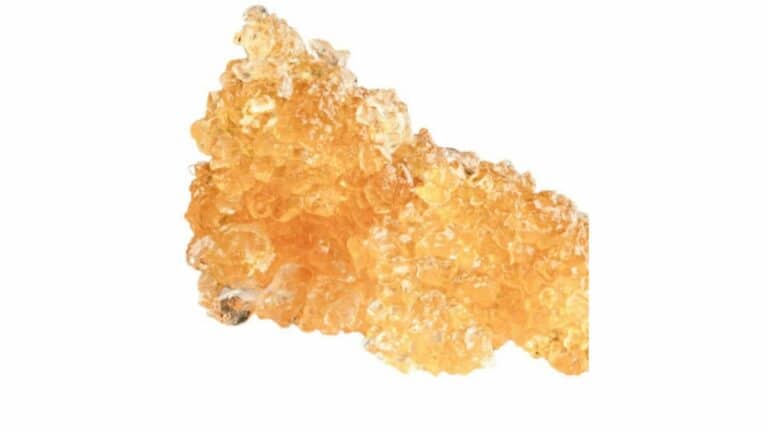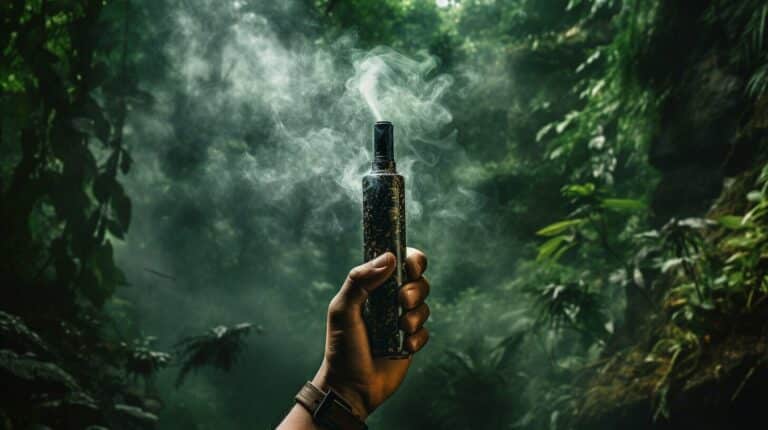What Is 11-Hydroxy-THC: Insights into the Potent Metabolite
Dive into the **hidden world** of 11-Hydroxy-THC, a **secret powerhouse** in your favorite plant, marijuana. Check it out: https://d8superstore.com/what-is-11-hydroxy-thc. Imagine: THC, the fire-maker in cannabis, takes a wild ride through your liver and transforms into the **mighty** 11-Hydroxy-THC. It races to your brain **quicker than a flash**. This change amps up its impact, making its effects stronger and last longer than the THC you inhale. Uncover more about this fascinating compound at https://d8superstore.com/category/11-hydroxy-thc. Why stick around? Because uncovering these amazing facts turns **you** into the guru of your group, impressing pals with smart snippets as you all ride the cosmic waves with just a leaf.
11-hydroxy-THC is the main active metabolite of tetrahydrocannabinol (THC), which is formed in the body after Δ9-THC is consumed.
The significance of 11-Hydroxy-THC lies in its ability to impart the psychoactive effects that are often associated with cannabis use. It is crucial in understanding the different outcomes that users may experience depending on the method of consumption of THC. While inhaled THC is converted into a smaller amount of 11-Hydroxy-THC, oral consumption leads to a larger conversion, thus explaining the variance in intensity and duration of effects between these consumption methods.
Understanding the pharmacokinetics of 11-Hydroxy-THC also holds relevance in medical and legal settings. In medical use, the knowledge of how 11-Hydroxy-THC interacts with the body can influence dosing and the expected therapeutic outcomes. From a legal perspective, the concentrations of THC and its metabolites, including 11-Hydroxy-THC, in blood or plasma can be pivotal in cases involving cannabis-related intoxication or impairment.
Chemistry of 11-Hydroxy-THC
The chemistry of 11-hydroxy-THC is fundamental to understanding its potency and effects after consumption. This section dissects its molecular structure, the process of conversion from delta-9-THC, and its binding affinity to cannabinoid receptors.
Molecular Structure
11-hydroxy-THC (11-OH-THC) is a major active metabolite of delta-9-THC, which is the primary psychoactive component of cannabis. The molecular formula for 11-hydroxy-THC is C₂₁H₃₀O₃, featuring a phenolic hydroxyl group that significantly affects its psychoactivity. This addition increases its water solubility compared to its parent compound, delta-9-THC.
Conversion from THC
Upon ingestion, delta-9-THC undergoes decarboxylation to become activated and then is metabolized by the liver into 11-hydroxy-THC. This metabolic process involves various enzymes and results in a compound that is more potent than delta-9-THC due to its enhanced ability to cross the blood-brain barrier.
Binding Affinity to Cannabinoid Receptors
11-hydroxy-THC exhibits a high binding affinity to CB1 cannabinoid receptors in the brain, which are part of the endocannabinoid system. The interaction with these receptors is responsible for the psychoactive effects experienced. Cannabidiol (CBD), another cannabinoid, can modulate the binding of 11-hydroxy-THC to CB1 receptors, often reducing its psychoactivity.
Pharmacokinetics
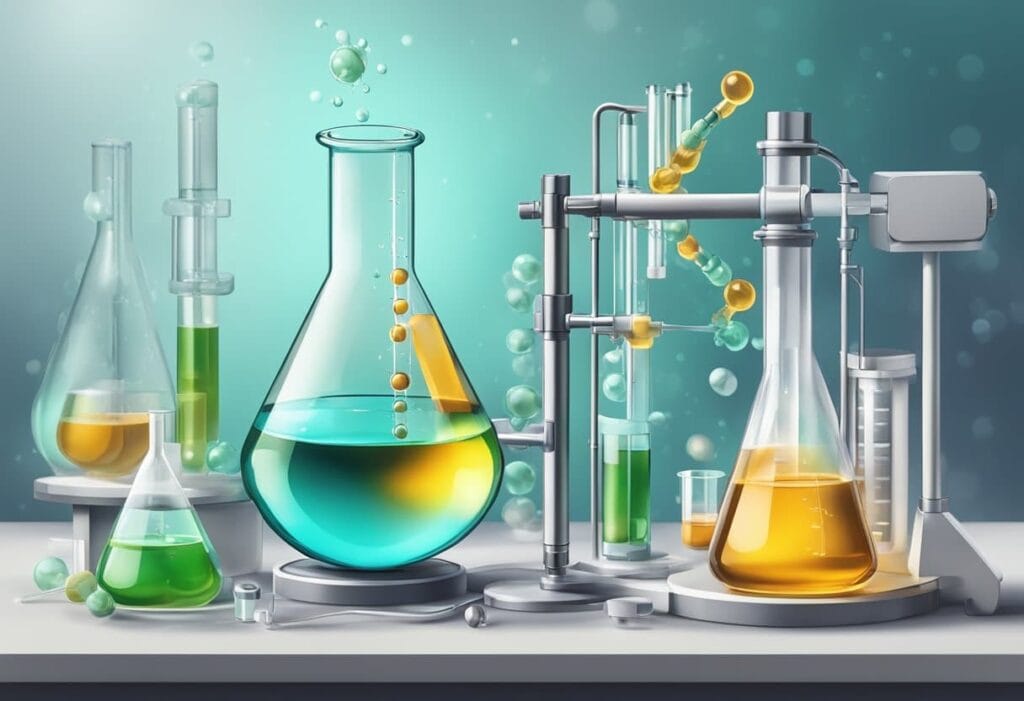
The pharmacokinetics of 11-Hydroxy-THC involve its absorption, metabolism in the liver, and variations in blood concentrations over time. This section will explore these processes to understand how the body handles this potent cannabinoid.
Absorption and Metabolism
Once ingested, 11-Hydroxy-THC is absorbed through the gastrointestinal tract. Metabolism begins as it passes through the liver, where it undergoes extensive first-pass metabolism. This process primarily involves the cytochrome P450 enzyme system, particularly CYP2C9, which metabolizes THC to form 11-Hydroxy-THC. This conversion is significant because 11-Hydroxy-THC is highly potent and crosses the blood-brain barrier more effectively than THC.
First-Pass Metabolism via the Liver
During first-pass metabolism, the liver plays a crucial role in converting THC to 11-Hydroxy-THC. This phase of metabolism can significantly reduce the concentration of THC before it enters the systemic circulation. As a result, the potency of orally ingested THC can appear lower compared to other forms of administration that bypass the liver, such as inhalation.
Blood Concentrations Over Time
Following absorption and metabolism, the blood concentrations of 11-Hydroxy-THC rise and fall over time. The peak blood levels are influenced by factors such as the dose ingested and the individual’s metabolism speed. Typically, blood concentrations begin to diminish as 11-Hydroxy-THC is further metabolized into other compounds, eventually being eliminated from the body.
Methods of Administration
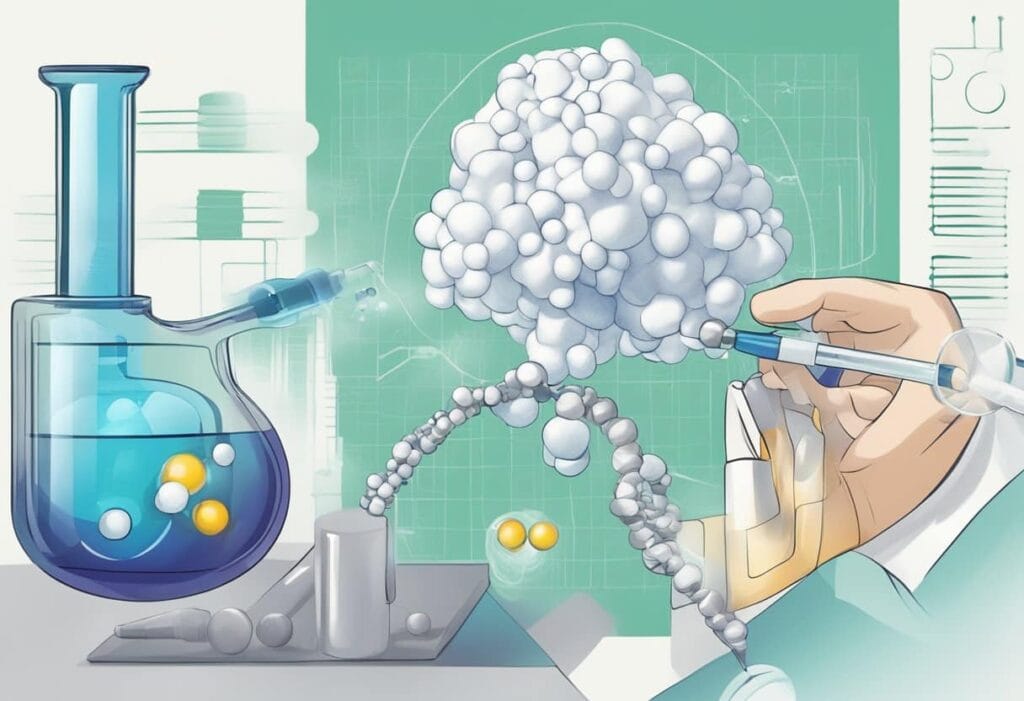
When discussing 11-Hydroxy-THC, it is crucial to distinguish between the different methods of administration, as they greatly influence the onset, intensity, and duration of the compound’s effects. These methods include inhalation, oral consumption, and through cannabis edibles that utilize the digestive system for absorption.
Inhalation vs Oral Consumption
Inhalation of 11-Hydroxy-THC occurs through smoking or vaping cannabis. When inhaled, the psychoactive effects are typically felt within minutes due to the rapid absorption of Δ9-tetrahydrocannabinol (THC) into the bloodstream through the lungs. Oral consumption, on the other hand, involves the digestive system and leads to the conversion of THC to 11-Hydroxy-THC by the liver, which can produce a more potent and longer-lasting effect compared to inhalation.
Edibles and Digestive System
With edibles, dosage control can be more challenging but is crucial for avoiding overconsumption. When cannabis is ingested, the active compounds are metabolized in the digestive system before entering the bloodstream. This process results in the formation of 11-Hydroxy-THC, which is more potent than THC and can produce longer-lasting and more intense effects. This highlights the importance of careful dosage and an understanding of the delayed onset when consuming cannabis edibles.
Vaping and Smoking
Both vaping and smoking are forms of inhalation that offer a faster route of administration into the body compared to oral methods. While smoking involves combustion, vaping heats cannabis to release its active compounds without burning it. Consequently, vaping is perceived by some as a less harmful alternative to smoking. However, the immediacy and control over dosage tend to be less precise than with oral consumption, leading to variability in individual response and effect profile.
Effects on the Body

11-Hydroxy-THC, also known as 11-OH-THC, is a metabolite of THC (Delta-9-tetrahydrocannabinol), which is the primary psychoactive component of cannabis. When THC is consumed orally, it is converted by the liver into 11-Hydroxy-THC, a potent psychoactive compound. This transformation plays a significant role in the intensity and duration of the effects on the body.
Psychoactive Impact
The psychoactive effects of 11-Hydroxy-THC are more profound compared to THC because of its ability to more effectively cross the blood-brain barrier. After ingestion, users often experience a stronger and more prolonged high. Its effects on the central nervous system can significantly alter perception, mood, and cognition.
Therapeutic Potential
11-Hydroxy-THC has considerable therapeutic potential. Its powerful effect on the brain is leveraged to alleviate symptoms like nausea and anxiety in clinical settings. The compound’s interaction with the body’s endocannabinoid system suggests it may help reduce inflammation and serve as a therapeutic agent for a variety of conditions.
Potential Side Effects
While the benefits of 11-Hydroxy-THC are promising, the metabolite can also elicit undesirable side effects. Due to its potent nature, the risk of overconsumption and experiencing intense psychoactive effects is higher. This may lead to discomfort, heightened anxiety, and other negative psychoactive reactions in some users.
Drug Testing and Legal Considerations

In the realm of drug testing and legislation, the presence of 11-hydroxy-THC and its metabolites is of paramount importance, specifically impacting the interpretation of drug tests and the legal consequences that follow.
Detection of Metabolites in Drug Tests
Drug tests are designed to detect various cannabis metabolites, including 11-hydroxy-THC, delta-9 THC, and 11-nor-9-carboxy-THC, also known as THC-COOH. The detection of these substances points to recent cannabis use. Urine screenings are commonly utilized for this purpose, with THC-COOH being a primary indicator due to its prolonged presence in the body. A study examining postmortem redistribution of cannabinoids showcases the complexity of interpreting these metabolites, as postmortem urine drug screens might sometimes give negative results even when there has been drug use.
Legal Status of 11-Hydroxy-THC
11-Hydroxy-THC, a metabolite of delta-9 THC, does not have a separate legal status from its parent compound. The legalization and decriminalization of marijuana in various regions universally extend to its active metabolites, including 11-hydroxy-THC and THC-COOH. However, the presence of these metabolites in blood or urine can have legal implications, particularly in jurisdictions with strict anti-drug laws. The analysis of THC and its metabolites in blood samples, including 11-hydroxy-THC, is accepted as legal evidence of impairment in many regions, which can lead to legal proceedings in cases of driving under the influence or workplace intoxication.
Comparison with Other Cannabinoids
In exploring the landscape of cannabinoids, it’s crucial to understand the differences in their effects and properties. Two of the most discussed compounds, delta-9-THC and CBD, offer varied experiences compared to the potent effects of 11-hydroxy-THC. Each cannabinoid interacts with the body’s endocannabinoid system uniquely, leading to distinct outcomes upon consumption.
THC vs 11-Hydroxy-THC
Delta-9-THC, commonly referred to as THC, is the primary psychoactive component in cannabis. When consumed through smoking or vaporizing, THC is quickly absorbed by the lungs and enters the bloodstream, inducing effects typically within minutes. The potency of THC’s psychoactive effect is well-known, leading to sensations such as euphoria, altered perceptions, and in some cases, anxiety.
Conversely, 11-hydroxy-THC is a metabolite of THC produced in the liver after oral ingestion of cannabis, such as when eating edibles. This compound is more potent than THC due to its increased ability to cross the blood-brain barrier, resulting in a more intense and longer-lasting psychoactive effect. Studies have shown that the potency of 11-hydroxy-THC can significantly differ from that of THC, leading to discrepancies in the user’s experience.
CBD vs 11-Hydroxy-THC
Cannabidiol (CBD) is another major cannabinoid found in cannabis that has gained prominence for its perceived therapeutic benefits without the psychoactive effects associated with THC. It interacts with the endocannabinoid system but does so in a way that does not result in the high experienced with THC.
When comparing 11-hydroxy-THC to CBD, the most notable contrast lies in their psychoactivity. Unlike 11-hydroxy-THC, CBD does not produce a high and is often sought for its potential to relieve conditions such as anxiety, chronic pain, and seizures. Despite both being metabolites of THC, research on 11-hydroxy-THC indicates that it maintains the psychoactive properties of its precursor, whereas CBD can actually counteract some of THC’s psychoactivity. This distinction is critical for users who are aiming to manage symptoms without the intoxicating effects.
User Considerations
When considering the use of 11-Hydroxy-THC, it is important for users to understand how dosage and personal tolerance can affect their experience. The type of cannabis product used can also influence both the intensity and duration of the effects due to varying levels of potency and efficiency of cannabis consumption.
Dosage and Tolerance
Dosage is a crucial factor when it comes to consuming any form of THC, including 11-Hydroxy-THC. The appropriate dose can vary widely among individuals, influenced by factors like body weight, metabolism, and personal tolerance levels. It’s essential to start with a low dose, especially for inexperienced users, as 11-Hydroxy-THC is known to produce a more potent effect once metabolized when compared to Delta 9-THC.
Cannabis users should be aware that tolerance can develop over time, necessitating larger doses to achieve the same effects. However, frequent use leading to high tolerance can also increase the risk of experiencing negative side effects.
Effects of Different Cannabis Products
Different cannabis products deliver 11-Hydroxy-THC in various forms and potencies, impacting the efficiency of its absorption into the bloodstream. For instance, edibles must go through the digestive system and are later metabolized by the liver, which transforms THC into 11-Hydroxy-THC. This process can enhance the strength and prolong the impact of its psychoactive effects.
In contrast, inhalation methods such as smoking or vaping allow Delta 9-THC to enter the bloodstream directly, with effects typically being felt more quickly but for a shorter duration. It is important for users to consider the potency and efficiency of the cannabis product to manage the intensity of the experience effectively.
Consequently, understanding one’s own tolerance and carefully selecting the appropriate cannabis product and dose is essential for a safe and desired therapeutic or recreational experience with 11-Hydroxy-THC.
Scientific Research
In the realm of cannabis research, the focus on how various cannabinoids interact with the human endocannabinoid system is gathering momentum. Cutting-edge studies continue to illuminate the mechanics behind these compounds and their effects on the body.
Endocannabinoid System Overview
The endocannabinoid system (ECS) is a complex network of receptors, endogenous ligands, and enzymes that play a pivotal role in maintaining homeostasis within the body. It comprises mainly two types of cannabinoid receptors: CB1 and CB2. CB1 receptors are predominantly found in the brain and are responsible for mediating the psychoactive effects of cannabinoids. Research has shown that 11-hydroxy-THC, a potent psychoactive metabolite of Δ9-tetrahydrocannabinol (THC), exhibits a high affinity for CB1 receptors. The interaction between 11-hydroxy-THC and these receptors is critical to understanding the compound’s influence on the body.
Emerging Studies on Cannabinoids
The study of cannabinoids, including THC and 11-hydroxy-THC, is a rapidly expanding field. Researchers have noted that when THC is consumed orally, it is converted by the liver into 11-hydroxy-THC, which is more potent and has a longer-lasting effect on the body. This understanding has sparked interest in exploring 11-hydroxy-THC for therapeutic applications. Meanwhile, the subtle influence of terpenes, aromatic compounds found in cannabis, has entered the spotlight for their potential to modulate the effects of cannabinoids. As the scientific community delves into this synergistic interplay, precise mechanisms and therapeutic benefits are expected to emerge, potentially revolutionizing the medical use of cannabis derivatives.
Consumer Guidance
11-Hydroxy-THC is an important metabolite of Δ9-tetrahydrocannabinol (THC), the main psychoactive compound in cannabis. Understanding its role in the overall effects of marijuana consumption can help consumers make informed decisions.
Choosing the Right Product
When selecting cannabis products, consumers should consider the form of THC present. While THC is initially present in cannabis as THCa (tetrahydrocannabinolic acid), it is converted to THC upon heating, as in smoking or vaporizing. This THC can then metabolize into 11-Hydroxy-THC in the body. Products that are ingested, such as edibles, can result in higher levels of 11-Hydroxy-THC due to this metabolism process.
Types of Cannabis Products:
- Smokables: Often preferred by cannabis smokers for their rapid onset of effects.
- Edibles: Can lead to higher 11-Hydroxy-THC levels and hence, a different potency and duration of effects.
- Tinctures: Allow for sublingual administration, which may affect THC concentrations in the body differently.
Understanding Potency and Strains
Potency in marijuana refers to the concentration of THC and its metabolites, including 11-Hydroxy-THC. Strains vary in THC content, with some having higher levels that result in more potent effects. It’s essential for consumers to start with lower potency products if they are inexperienced, as the effects of 11-Hydroxy-THC can be more intense and longer-lasting than THC alone.
Factors Influencing Potency:
- Strain: Indica, Sativa, and hybrid strains each have varying levels of THC concentrations.
- THC Content: High THC content increases the potential for strong psychoactive effects.
- Consumption Method: The method of consumption (smoking, edibles, etc.) affects how much 11-Hydroxy-THC is produced in the body.
By understanding these factors, consumers can better anticipate the effects of cannabis and select products that suit their experience level and desired outcomes.
Market Trends and Innovations
With the expanding legalization and acceptance of cannabis products, there have been significant advancements in the market, particularly concerning the potency and predictability of effects from cannabis edibles. Innovations in cannabinoid development are continuously shaping how 11-hydroxy-THC is utilized.
Advancements in Cannabis Edibles
The cannabis edibles market has seen a surge in sophisticated products that prioritize consistent dosing and enhanced bioavailability of cannabinoids such as 11-hydroxy-THC. Techniques like ion mobility-coupled-LC–MS/MS have been instrumental in ensuring the precise quantification of cannabinoids, thereby improving the safety and predictability of edibles. Additionally, the industry has witnessed a pivot towards healthy and gourmet edible options, aligning with broader food industry trends focusing on well-being and premium experiences.
Future Directions in Cannabinoid Development
Cannabinoid science is advancing rapidly. Research is now exploring the ultra-high performance liquid chromatography tandem mass-spectrometry to further refine the quantification and understanding of how cannabinoids like 11-hydroxy-THC behave and are processed in the body. As new therapeutic potentials are discovered, the industry is preparing for novel synthetic routes and formulations that could revolutionize how cannabinoids are used clinically. The ongoing research is not only honing in on the psychotropic effects but also how cannabinoids can be optimized for medicinal and wellness purposes, evidencing immense market potential for innovation in the sector.
Environmental and Agricultural Factors
The quality and characteristics of cannabis, including the levels of 11-Hydroxy-THC, are significantly influenced by environmental and agricultural practices. These practices dictate the cannabinoid profile and potency of the plant.
Cultivation Impact on THC Levels
Cannabis plants’ THC concentrations are subject to change based on various environmental factors which include light, water, and soil health. Improper cultivation methods may lead to decreased levels of THC, whereas optimal conditions can enhance its presence. For example, controlled stress applied to cannabis can sometimes increase THC concentration as the plant responds to its environment.
Importance of Terpenes and Flavonoids
Aside from cannabinoids like THC, cannabis contains other compounds such as terpenes and flavonoids which are influenced by the plant’s growing environment. These compounds are responsible for the plant’s aroma and may contribute to the entourage effect, which posits that cannabis components work better together than in isolation. Agricultural practices play a crucial role in the development of terpenes and flavonoids; for instance, the right balance of nutrients is essential for their synthesis.
Frequently Asked Questions
This section addresses common inquiries regarding 11-Hydroxy-THC, clarifying its effects, detection, and pharmacological aspects.
What are the potential side effects of consuming 11-Hydroxy-THC?
Consuming 11-Hydroxy-THC may lead to side effects such as altered perception, coordination issues, and changes in appetite. As with other cannabinoids, individual experiences may vary.
How does 11-Hydroxy-THC compare to Delta 10 in terms of effects and structure?
11-Hydroxy-THC and Delta 10 differ structurally at a molecular level, which influences how they interact with the body’s cannabinoid receptors. Their effects also diverge, with 11-Hydroxy-THC typically producing more potent psychoactive outcomes compared to Delta 10.
Can 11-Hydroxy-THC be detected on standard drug tests?
Standard drug tests designed to detect THC metabolites can identify 11-Hydroxy-THC since it is a byproduct of THC metabolism.
What benefits can one expect from 11-Hydroxy-THC consumption?
The benefits of 11-Hydroxy-THC can include pain relief, reduced inflammation, and potential aid in managing nausea and vomiting, especially in medical cannabis contexts.
Is 11-Hydroxy-THC considered to be a psychoactive compound?
Yes, 11-Hydroxy-THC is indeed a psychoactive compound, known for producing effects on the mind similar to but often more intense than THC, particularly when ingested orally.
What is the duration of action for 11-Hydroxy-THC in the body?
The duration of action for 11-Hydroxy-THC in the body can extend several hours longer than inhaled THC, partly due to its different metabolic pathway and the lingering presence in the blood plasma.

